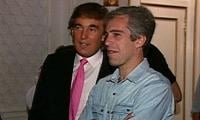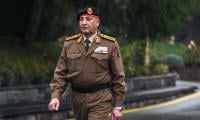ISLAMABAD: Two of the previous opposition alliances in Pakistan’s recent history were cobbled together against civilian governments while three such coalitions were forged against military regimes.
The primary objective of every such grouping has been to remove the incumbent government from power. Only one alliance was successful in achieving its aim, which, however, ultimately led to the imposition of martial law. Other coalitions were unable to show governments the door, although they did succeed in weakening them.
Political campaigns in the past rarely turned violent; most of them were peaceful and remained confined to holding rallies and taking out processions to ratchet up pressure on the government of the day to bow out. All the alliances included the major opposition parties.
How the just constituted Pakistan Democratic Movement (PDM) will fare and how much trouble it would be able to create for the government will be clear in the coming weeks and months. The schedule of protest it has initially released appears by and large peaceful in intent. However, the January 2021 long march has the potential of creating disorder in case no agreement is reached between the organizers and the law enforcement agencies.
Every multi-party grouping invariably has at least one or two parties within its fold that are capable of contributing committed manpower to make the protest effective. In the present coalition, the Jamiat-eUlema-e-Islam-Fazl headed by Maulana Fazlur Rehman has a dedicated political force and streetpower at its beck and call.
The Pakistan National Alliance (PNA), comprising what were commonly known as the ‘nine stars’, was put together against the Zulfikar Ali Bhutto government in the 70s. The alliance was very ferocious and determined and at its peak provoked large-scale disturbances, strikes, burning of properties and the laying siege of the assemblies. The slogan on which the PNA had attracted people during its agitation was the enforcement of Nizam-e-Mustafa.
The target of the entire opposition, with the religious parties dominant, was the Pakistan People’s Party (PPP), which had no political ally at the time. The then prime minister had agreed after talks with the opposition to almost all the demands of the PNA, but martial law was still imposed by Gen Ziaul Haq, plunging Pakistan into military rule for the next 11 years.
After its success in bringing down Bhutto, the PNA disintegrated like all other coalitions, having lost its utility and relevance. Some leaders of its components, including members of the Jamaat-e-Islami and Nawabzada Nasrullah Khan’s party, were inducted into the martial law cabinet as a reward.
The Movement for the Restoration of Democracy (MRD) was formed against Ziaul Haq’s military regime in the 80s. The PPP was its main component, although it contained the entire political spectrum from Wali Khan’s party to the JUI. The MRD put up a very bold struggle against dictatorship and a large number of its workers offered sacrifices during Zia’s repressive rule, specifically in Sindh where the movement remained high-pitched and effective. It was spearheaded by Begum Nusrat Bhutto and Benazir Bhutto, and in their absence, other PPP leaders came in to move it forward. To keep the PPP and other political parties out of the electoral process, the military regime finally held non-party elections in 1985.
The Pakistan Democratic Alliance (PDA) was devised by Benazir Bhutto against the Nawaz Sharif government during the nineties. Air Marshal Asghar Khan’s Tehrik-e-Istiqlal and Allama Tahirul Qadri’s Pakistan Awami Tehreek (PAT) were part of the grouping. Qadri was its first chairman. At the time, he was a member of the National Assembly. The PDA was successful in spawning problems for the regime, but not to the extent where it felt its survival was threatened.
The Alliance for the Restoration of Democracy (ARD) was knocked together by the Pakistan Muslim League-Nawaz (PML-N), PPP, Nawabzada Nasrullah’s party and other political forces in December 2002 against the Pervez Musharraf government. Begum Kulsoom Nawaz was the driving force behind its formation. However, it failed to make any major impact on the political landscape because the Sharif family went into exile just a week after its creation. At one time, Makhdoom Javed Hashmi headed the ARD.
Nawaz Sharif also launched the Tehreek-e-Nijat against the Benazir Bhutto government during the nineties and travelled by train from Lahore to Peshawar as part of his protest. Pakistan’s chequered parliamentary politics is not devoid of instances of en masse resignations from assemblies by the opposition lawmakers to pile up pressure on the incumbent government.
In 1993, Benazir Bhutto had handed over the resignations of PPP MPs to the then President, Ghulam Ishaq Khan, to provide him a justification to dismiss the Nawaz Sharif government. However, these resignations were never delivered to the Speaker for acceptance. The move remained just an empty threat. But the president eventually sacked the government and dissolved the assemblies, which were restored by the Supreme Court. According to the then Chief of Army Staff Abdul Waheed Kakar formula, both the president and prime minister stepped down, paving the way for fresh general elections that Benazir Bhutto won and formed the government.
The Pakistan Tehreek-e-Insaf (PTI) members of the National Assembly and legislatures of Punjab and Sindh handed over their resignations in 2014 to exert pressure on the Nawaz Sharif government to step down. However, PTI lawmakers in the Khyber Pakhtunkhwa (KP) assembly led by Chief Minister Pervez Khattak refused to quit. The speakers did not accept the resignations and ultimately the PTI members came back to the assemblies and resumed their functions.
It is premature to say whether or not the PMD’s long march will be similar to the one sponsored by the PTI in 2014. It was later converted into a sit-in in Islamabad’s red zone and continued for 126 days and had to be terminated after the terrorist attack on the Army Public School in Peshawar.
Maulana Fazlur Rehman’s recent long march was converted into a sit-in in the federal capital. Despite fears, it remained peaceful. Throughout its route, it was a smooth affair posing no law and order problem. It also ended on the same note after a few days. It was the Maulana’s solo flight.















